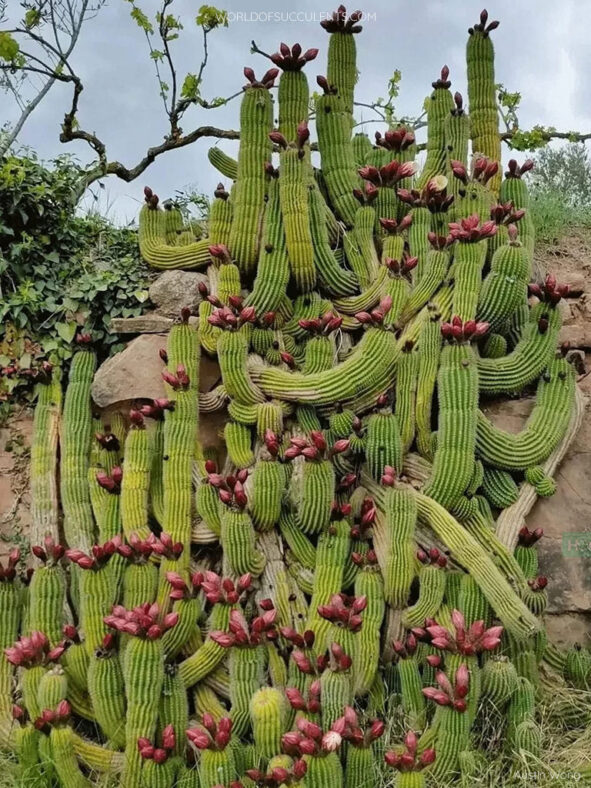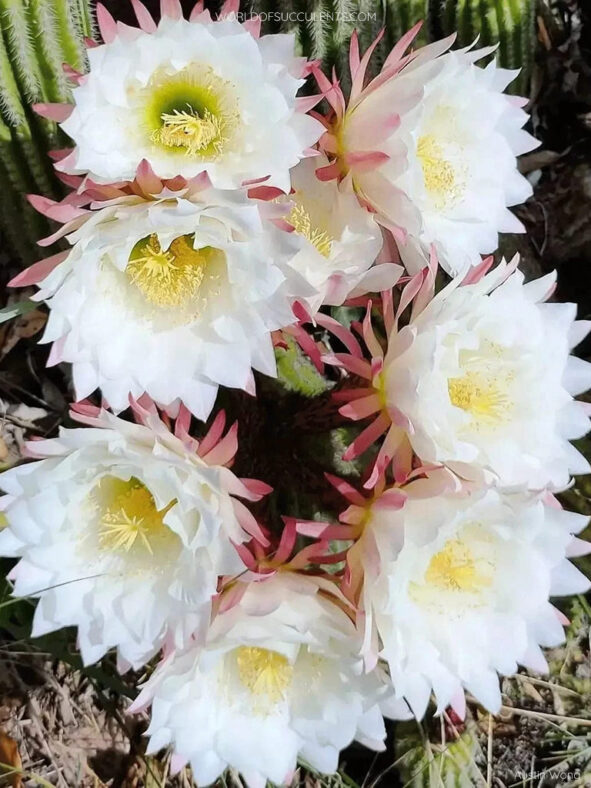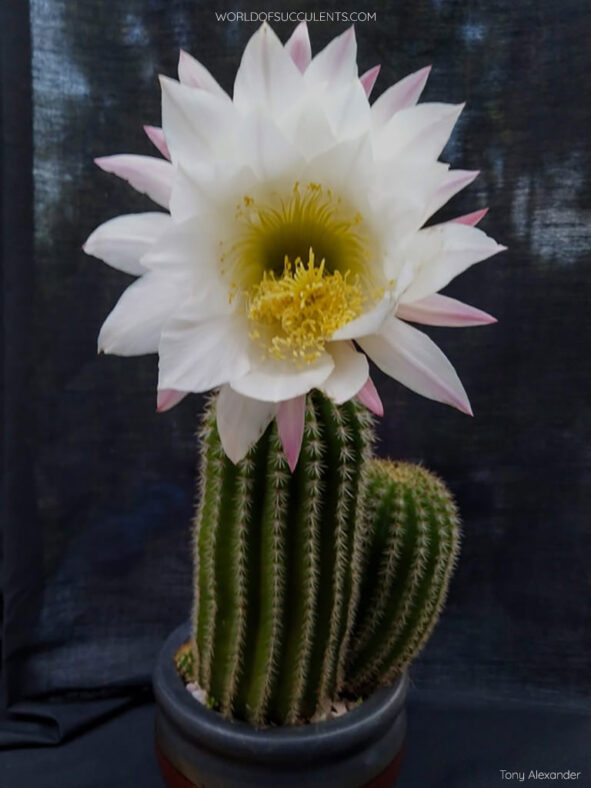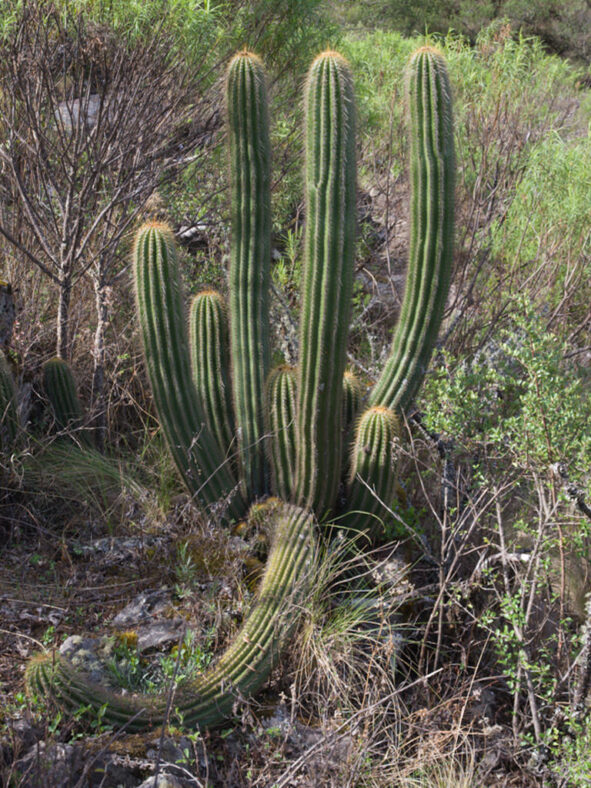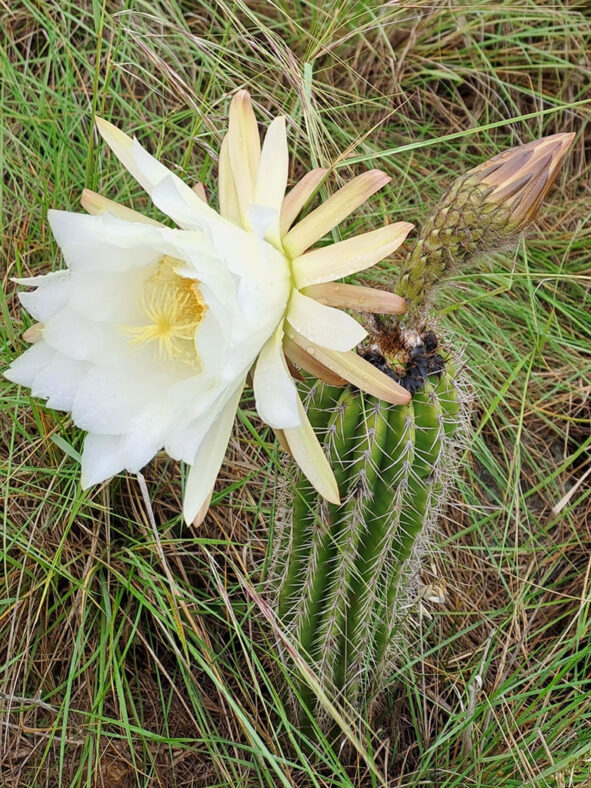Soehrensia schickendantzii is a variable species that varies in the size of its stems, spination, and length of spines. It was described as Echinopsis schickendantzii by Frédéric Albert Constantin Weber and published in Dictionnaire d'Horticulture in 1896.
Scientific Name
Soehrensia schickendantzii (F.A.C.Weber) Schlumpb.
Common Name(s)
Torch Cactus
Synonym(s)
Cereus schickendantzii, Echinopsis schickendantzii, Trichocereus schickendantzii
Scientific Classification
Family: Cactaceae
Subfamily: Cactoideae
Tribe: Cereeae
Subtribe: Trichocereinae
Genus: Soehrensia
Etymology
The specific epithet "schickendantzii" (pronounced "shik-en-DANT-zee-eye") honors Friedrich Schickendantz, also known as Federico Schickendantz (1837-1896), a German naturalized Argentine scientist who worked in the fields of mineralogy, chemistry, botany, geology, and meteorology.
Origin
Soehrensia schickendantzii is native to Argentina (Tucumán, Catamarca, Salta, and Jujuy) and Bolivia (Tarija, Chuquisaca, and Santa Cruz). It inhabits high-altitude grasslands, ranging from 3,940 to 10,500 feet (1,200 to 3,200 m) above sea level.
Description
Soehrensia schickendantzii, formerly known as Echinopsis schickendantzii or Trichocereus schickendantzii, is a typically shrubby cactus with green, cylindrical stems that have 10 to 15 ribs. While it can occasionally grow solitary, it usually branches out from the base, forming clumps over time. The stems can grow upright or have a decumbent habit, reaching lengths of up to 4.6 feet (1.4 m), although they are typically shorter, and can measure up to 4 inches (10 cm) in diameter. The ribs of the stems are lined with woolly, closely spaced areoles, each bearing a cluster of yellowish spines. Generally, each areole has 2 to 8 central spines (usually 4), along with 9 radial spines, and may develop additional radial spines as it matures. The spines are straight, flexible, and typically around 0.4 inches (1 cm) long, though some varieties have significantly longer spines.
From spring to early summer, Soehrensia schickendantzii produces white, funnel-shaped flowers with a floral tube covered with long dark hairs. The flowers can reach a length of 8.8 inches (22 cm). They appear near the top of the stems, and last for several days. The edible fruits are nearly spherical, measuring up to 2 inches (5 cm) long and 2.4 inches (6 cm) in diameter. They are green and remain covered in the long, dark hairs from the floral tube.

How to Grow and Care for Soehrensia schickendantzii
Light: Soehrensia schickendantzii thrives in full sun to partial shade. When grown indoors, placing the plant near a window that receives at least 6 hours of sunlight daily is ideal. In the spring, if possible, move the plant outdoors, but be sure to acclimate it to direct sunlight gradually to avoid sunburn.
Soil: This cactus prefers sandy or gritty soil, but it can tolerate other soil types as long as they provide good drainage. You can use a commercial cactus potting soil mix or create your own.
Temperature: Soehrensia schickendantzii is highly tolerant of high temperatures but prefers cooler conditions in winter, ideally between 41°F and 50°F (5°C and 10°C). It is hardy in USDA Plant Hardiness Zones 9a-11b, which have average annual extreme minimum winter temperatures ranging from 20°F to 50°F (-6.7°C to 10°C).
Watering: During the growing season, water the plant thoroughly but allow the soil to dry out completely before watering again. Avoid letting the container sit in a saucer of water. Suspend watering during winter.
Fertilizing: This cactus benefits from fertilizing during the growing season. Apply a water-soluble fertilizer and suspend feeding during winter when the plant is dormant.
Repotting: Repot as needed, preferably in late winter or early spring, using a slightly larger container with drainage holes. Ensure the soil is dry before repotting.
Propagation: Soehrensia schickendantzii can be easily propagated from offsets that grow around the base of the stems. The best time to remove offsets is in early summer.
Learn more at How to Grow and Care for Echinopsis.
Toxicity of Soehrensia schickendantzii
Soehrensia schickendantzii is non-toxic to humans or pets, but keep it away from pets and children due to its sharp spines.
Links
- Back to genus Soehrensia
- Succupedia: Browse succulents by Scientific Name, Common Name, Genus, Family, USDA Hardiness Zone, Origin, or cacti by Genus
Photo Gallery
Click on a photo to see a larger version.
